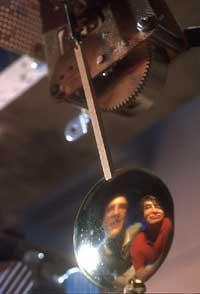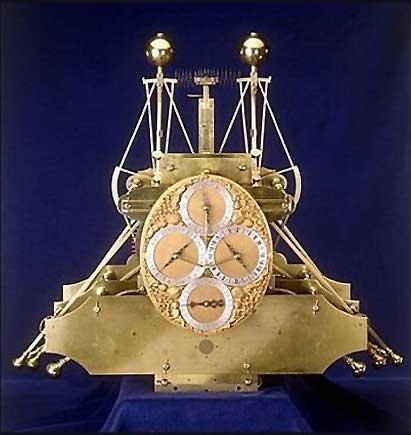Unintentionally and at the same time
2002/02/26 Carton Virto, Eider - Elhuyar Zientzia
For example, the German physicist Christian Huygens observed 300 years ago how two pendulums placed together were synchronized. And to this day it has not been known to explain the phenomenon.
Huygens discovered the phenomenon by trying to guess how to measure length on ships. So the sailors had serious problems knowing exactly where they were. While they could calculate the local time with the sun, to calculate the length they needed the time of a reference point. Thus, knowing the hour of the two points and knowing that every 15 degrees lost or gained an hour, they could calculate the length accurately. At that time, however, there were no clocks that accurately measured time at sea, so the timing of the boat's watch with the reference point was useless.

The clock designed by Huygens was double. Within the same structure had two pendulums, one to work with the second in case of deterioration. And being transported on board, he added 40 kilograms of lead like straw. Sick, he spent many hours looking at his invention and half an hour after the commissioning of the system he observed that pendulums were synchronized: starting to move like mirror image of the other. Synchronization always occurred, regardless of the starting position of each pendulum. Huygens thought that synchronization was due to small movements that occurred on the watch stand, but he could not prove it.
Now researchers at the Georgia Institute of Technology have rebuilt the watch and found an explanation. It has been proven that each pendulum transmits part of the energy to the support and that part of that energy reaches the other pendulum. The energy exchange ends up synchronizing.
But synchronization doesn't always happen. It only happens when the swing speed of the pendulums is practically the same and have a large mass support. Coincidentally, Huygens fulfilled both conditions. According to researchers from Georgia, Huygens was able to see the phenomenon thanks to the great precision of the watch.
In addition to solving an ancient mystery, these explanations can serve to help engineers who want to predict when and how synchronization can occur.

Gai honi buruzko eduki gehiago
Elhuyarrek garatutako teknologia






